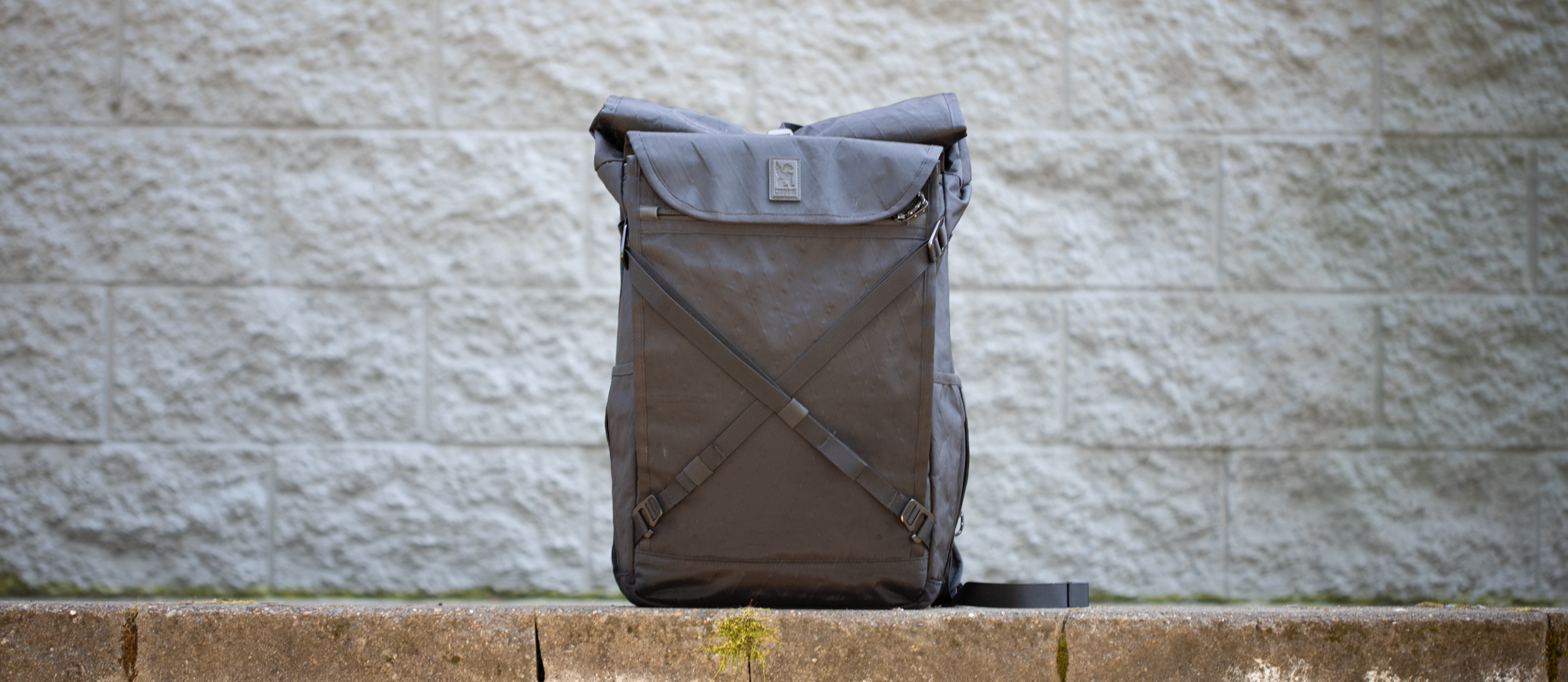Cyclingnews Verdict
Chrome Industries messenger bags and backpacks have always been incredibly well-made and utilitarian as well as status symbols. The Bravo 3.0 actually dials back some of the iconic style features but also adds more utility. If you want a single bag for bike commuting and travelling, especially with a laptop, you’ve found it.
Pros
- +
Removable inner bag is useful and stylish
- +
35L internal volume is a category leader
- +
Zippered quick-access side pockets
- +
Gusseted laptop pocket fits a 15in laptop even if there's no fruit logo
Cons
- -
Missing the iconic Chrome seatbelt buckle
- -
Lacks upper shoulder cinch straps
- -
Roll top buckle is harder to use than a big clip
You can trust Cyclingnews
Anyone who commutes by bike needs a safe and secure solution for carrying cargo with them. Some choose pannier bags, others opt for the more modern approach of bikepacking bags, but one of the simplest ways of handling this challenge is to choose one of the best cycling backpacks on the market. It's workable no matter what kind of bike you have and it can be a multi-use purchase that not only serves a purpose when you're on the bike, but also in a wide variety of other situations.
One of the biggest names in this space is Chrome Industries. Born in the American urban landscape in the mid-'90s the brand is iconic and stylish. Over 25 years later carrying one of their bags stills feels like a wink, a nod, and a badge of being a part of a certain culture. That said, it's not just marketing and status that gives the brand the staying power it has. Chrome Industries grew from a counter-culture icon to a mainstay in the industry because the products last forever and fundamentally work. Change is the only constant though, so while Chrome enjoys a history of good products, do its newest pieces stand up to the reputation set by those older products? We put the Chrome Industries Bravo 3.0 to the test to see just that. If you are looking for a cycling-specific backpack keep reading to see if this is the right one for you.
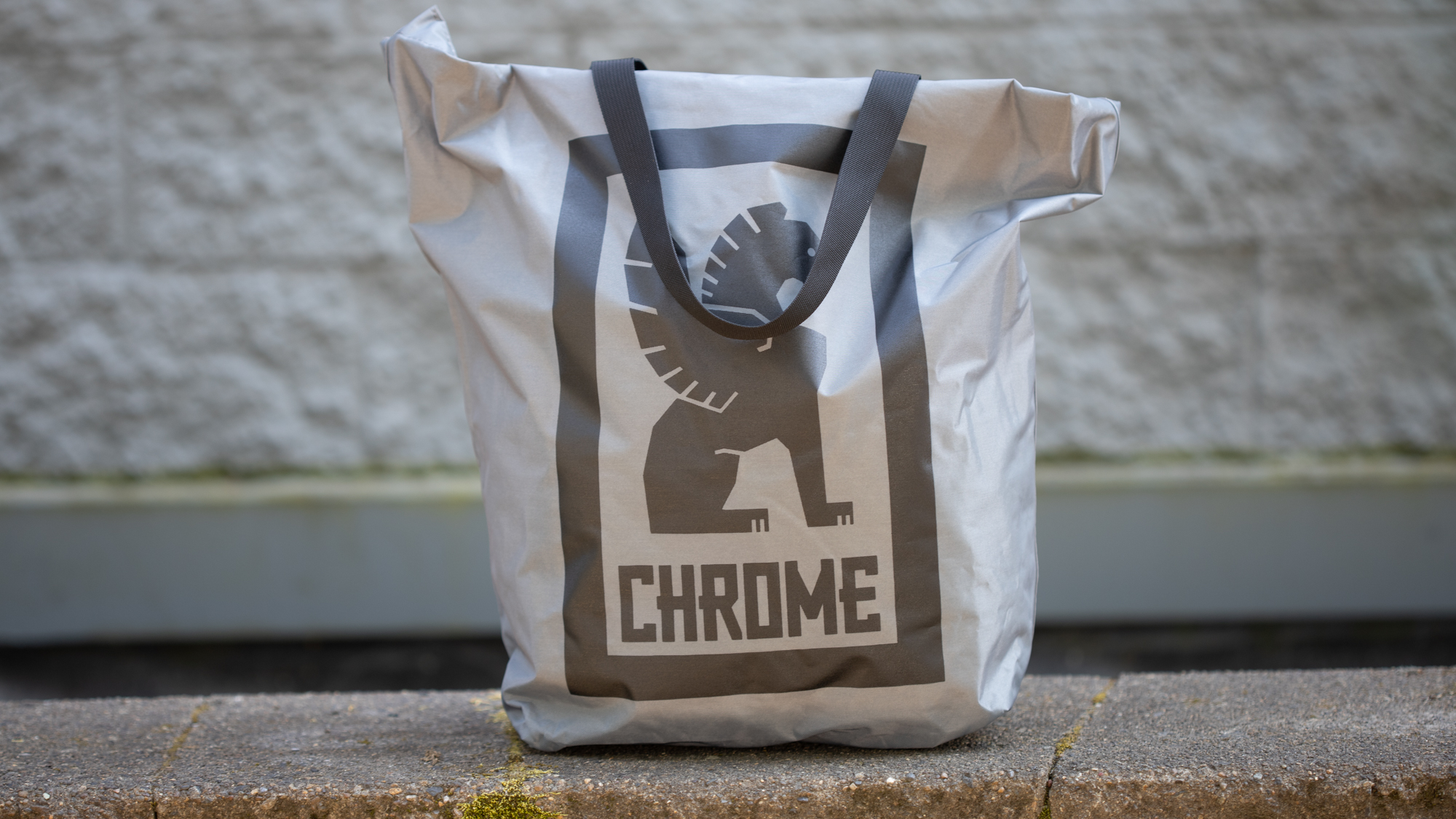
Design and aesthetics
There are two colour options for the Chrome Bravo 3.0 and as is the norm, they aren't simple names. Instead of black or green, there's Blckchrm and Olive Branch but, for once, this is more than just clever marketing. While Olive Branch uses a Bluesign-approved 1050D nylon fabric, the Blckchrm is the premium option and uses a different fabric. 1050D nylon is durable and stylish but the 22x fabric of the Blckchrm steps it up a level.
It is a technical material that's lighter, stronger, and more water resistant than knit nylon. In the past, Chrome bags used an inner tarp liner. That's the design of the Barrage Cargo backpack we've previously covered and while it works, it adds bulk. It's also a design that allows the outer to hold water even if that never actually makes it through to the interior. The 22x material keeps water from soaking in to start with and it's also got a subtle, but distinct, diamond pattern.
Whatever style you end up choosing, the bags are otherwise the same and both are waterproof. Not only is there the inner liner on the Olive Branch option, or the 22x material, but there’s another layer of waterproofing on the inside. Below the roll top upper, the main compartment of the bag is a three-dimensional rectangle about 130mm deep. Inside of the main space is a removable tote that's internally taped and has a strip of Velcro across the top in the front and back. It happily sits unnoticed in the Bravo 3.0 most of the time but should you ever need a second bag, it pulls out and has a pair of handles for use alone.
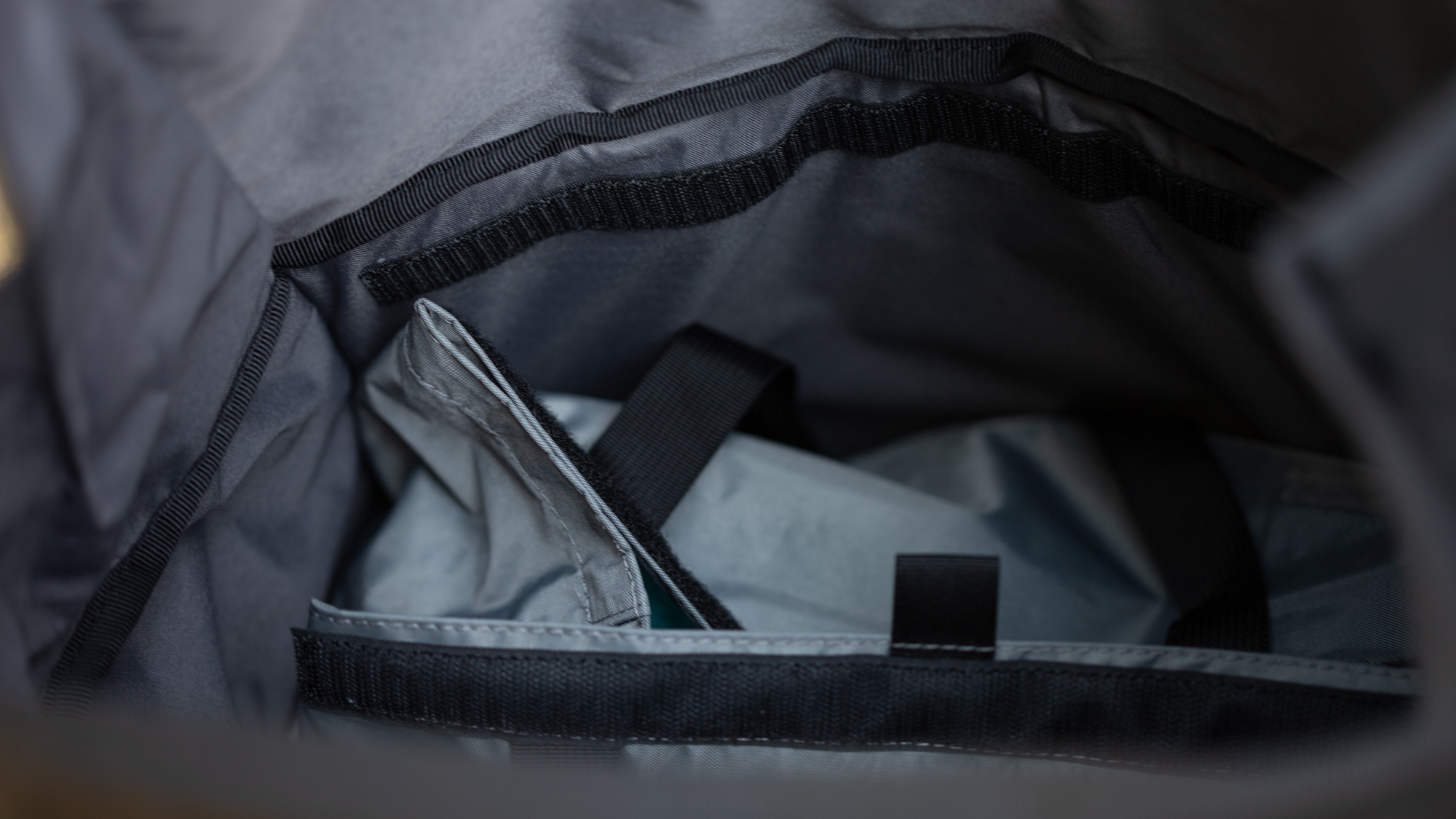
Aside from the bag-within-a-bag system, the interior is otherwise just a large 35L space. If you are looking for additional organisation you'll need to look outside. On each side is an expandable pocket that's perfect for a water bottle or lock and on the front of the bag is a cross strap system. The cross strap uses clips at every connection to the rest of the bag so it can be completely removed but it also expands and works best for a helmet when off the bike.
Behind the cross strap is where you can find the majority of the available organisation for the whole bag. There's a zippered pocket that stops about a hand's length from the top and, after opening the Velcro flap, you'll have access to a padded laptop sleeve. There's also a pocket in front of the padded section that has spots for pens and a small open pocket that might have been perfect for business cards at a time when they were common. The rest of the pocket is open and benefits from gussets for expansive volume.
The last bit of organisation on the Bravo 3.0 is a pair of zippered pockets mid-way up the body of the bag. The inside of this pocket is a fleece lined opening between the two layers of padding at the back of the bag. These are the most protected pockets in the whole design and with the zipper, they are perfect for a phone or a wallet while you ride. If you want faster access for those pieces there are also a series of loops on the straps. Chrome sells accessory phone pouches that mount on the straps but they will require another purchase.
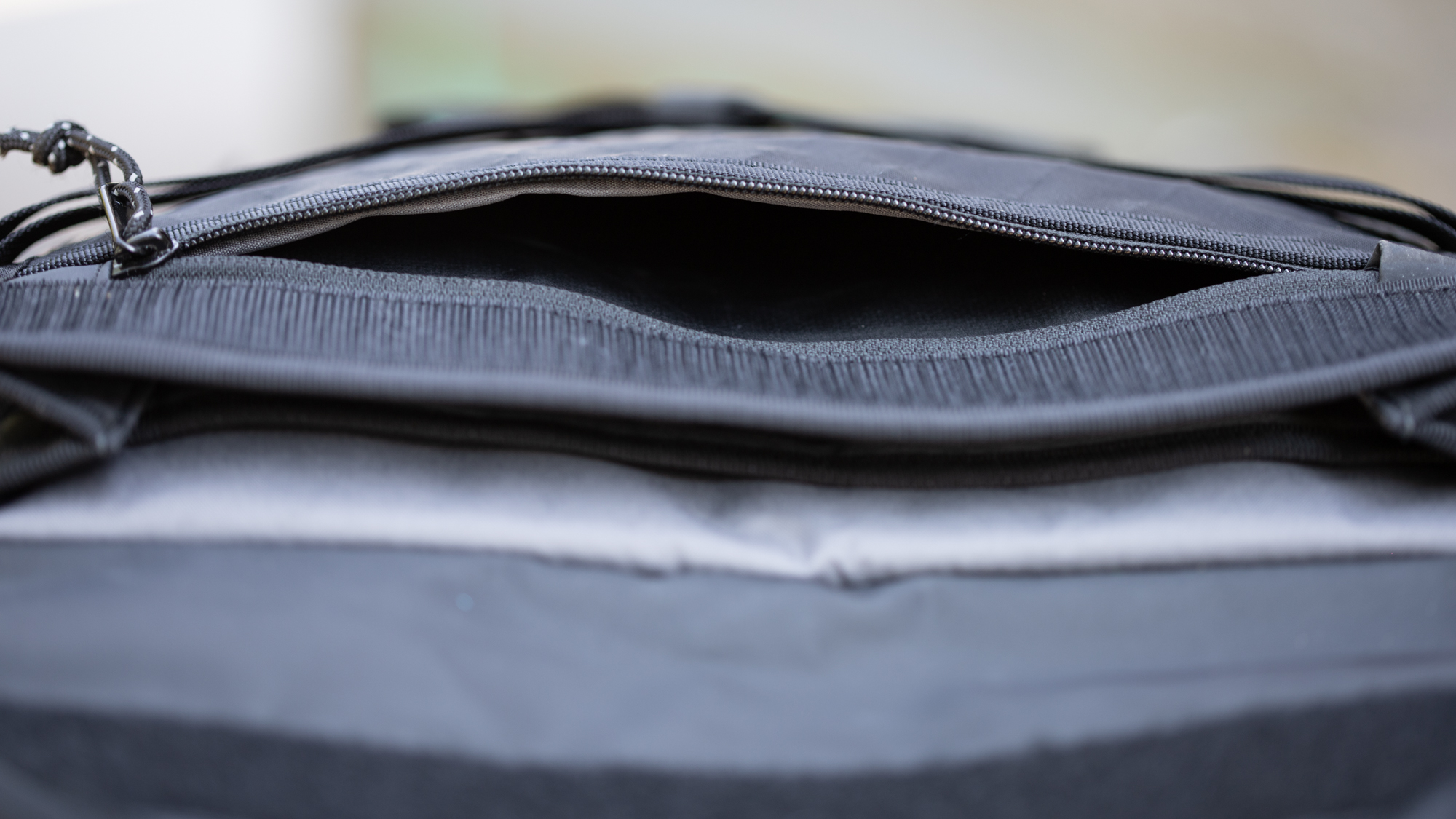
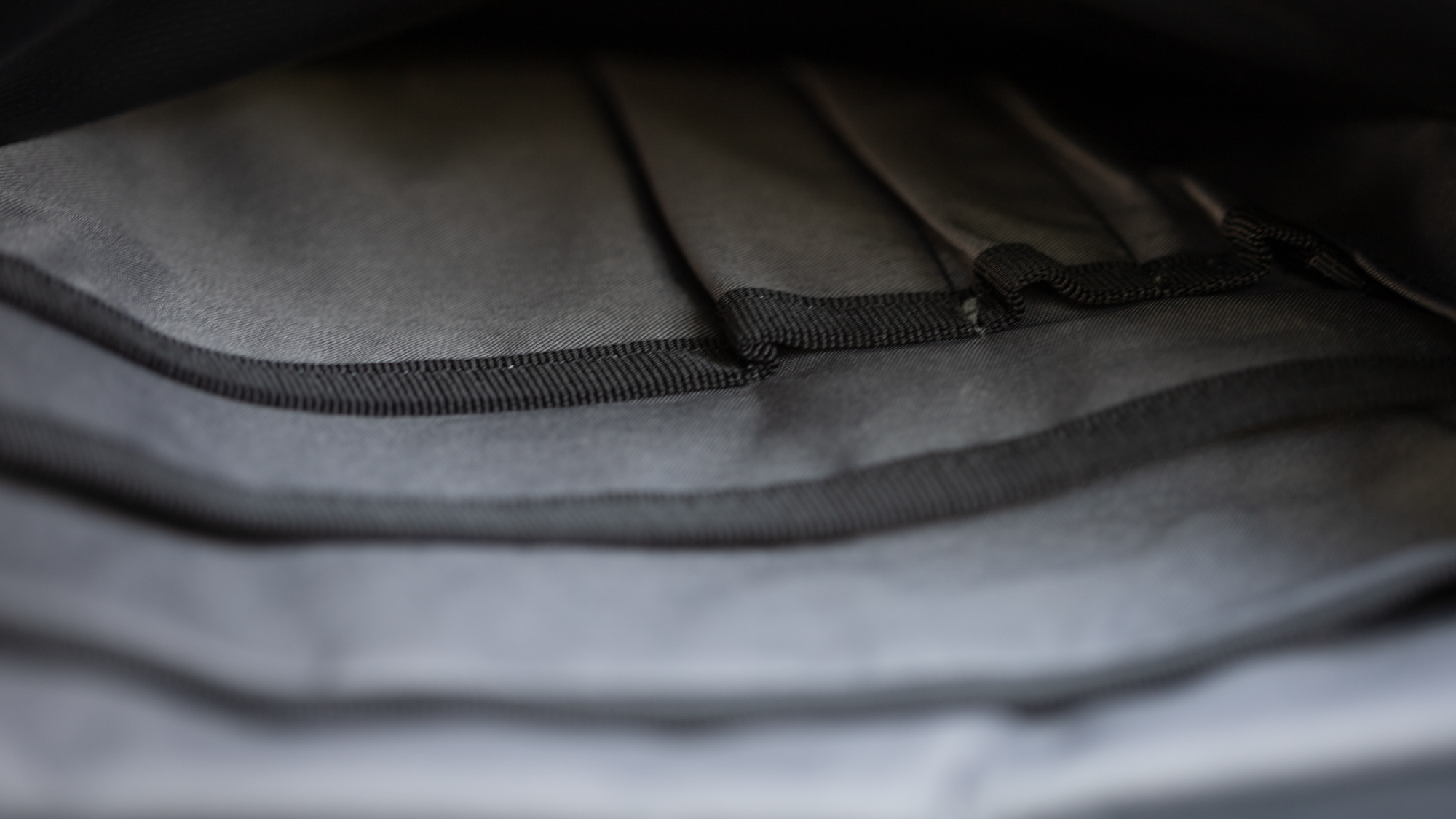
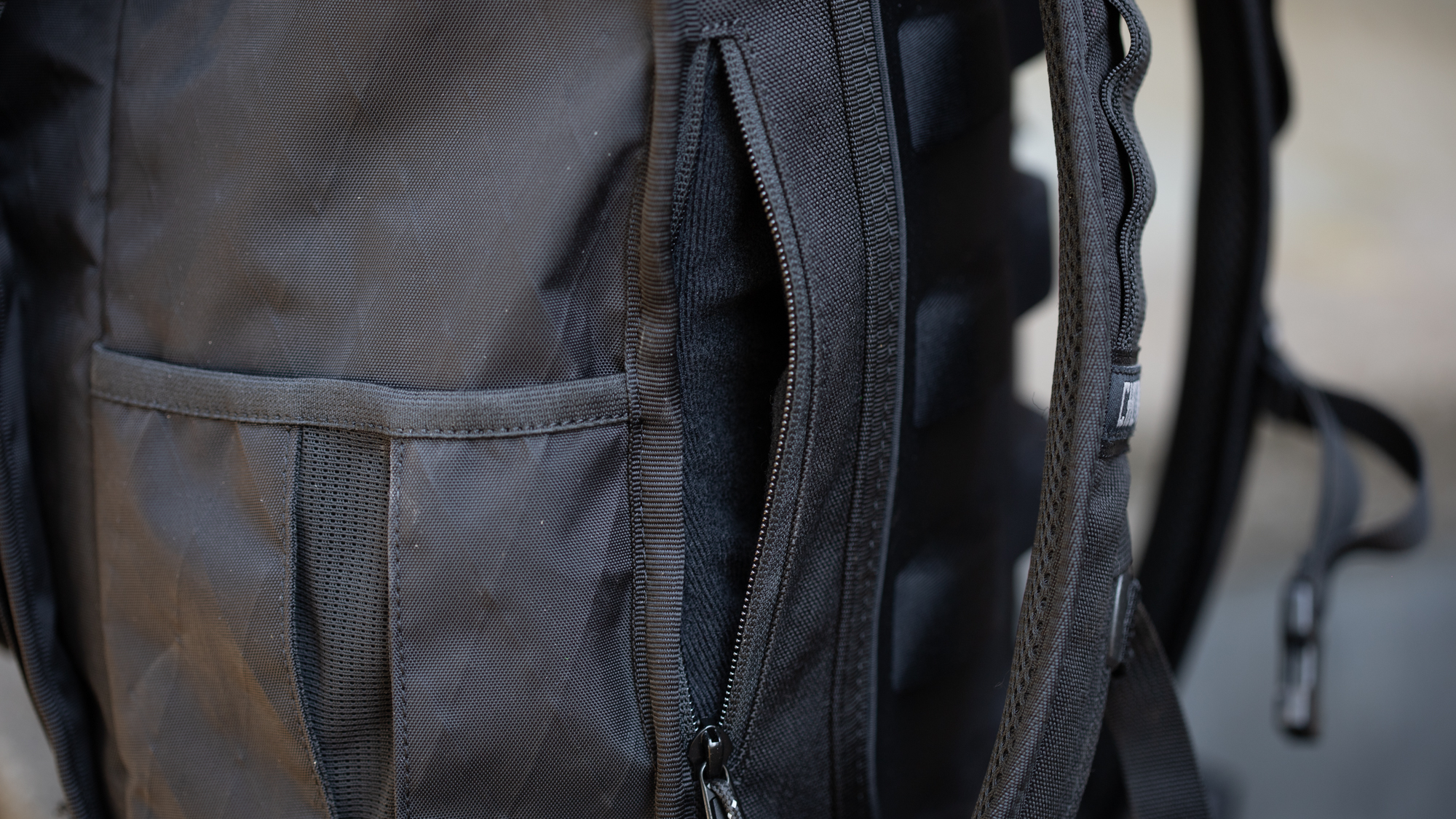
Performance
Recently, my laptop has grown in size and I've found a need for a new bag. I needed a quality backpack that I could carry a 15in laptop in while riding and travelling. On the riding side of things, this is a very comfortable option. I'm not a big guy but despite the large available volume it sits comfortably in the middle of the back. The padding against the back is much larger, and stiffer, than previous Chrome designs. It's also a different arrangement meant to help with airflow by adding additional crossflow. Chrome has continued the theme of more padding with the shoulder straps as well.
When it comes to the laptop side, the Bravo 3.0 moves the laptop from the back of the bag to the front. Keeping the laptop near the back is something Timbuk2, among others, tends to do. Switching it up means that as you lean forward while riding it will never put the weight of whatever else you are carrying directly onto the computer, where it could be damaged.
Since all the organisation for small items is in the same compartment, this is going to be the place you need to get into most of the time. When flying, it means I can push the bag under the seat in front of me and keep it face up. There's no weight on the computer but I can also access small items like headphones. It's a well-thought-out design that makes life a little easier.
Even more convenient than that are the three zippered pockets. The two that sit against your back and the one accessible outside of the laptop compartment are all perfect for the little things you need to access in a hurry. When I'm riding, I pull my wallet, phone, and keys out of my pockets and I spread them throughout these pockets. When I'm travelling, my wallet still goes in there but my passport and boarding passes tend to be in one of the lower zippered pockets that are easy to get to by dropping a strap off one shoulder.
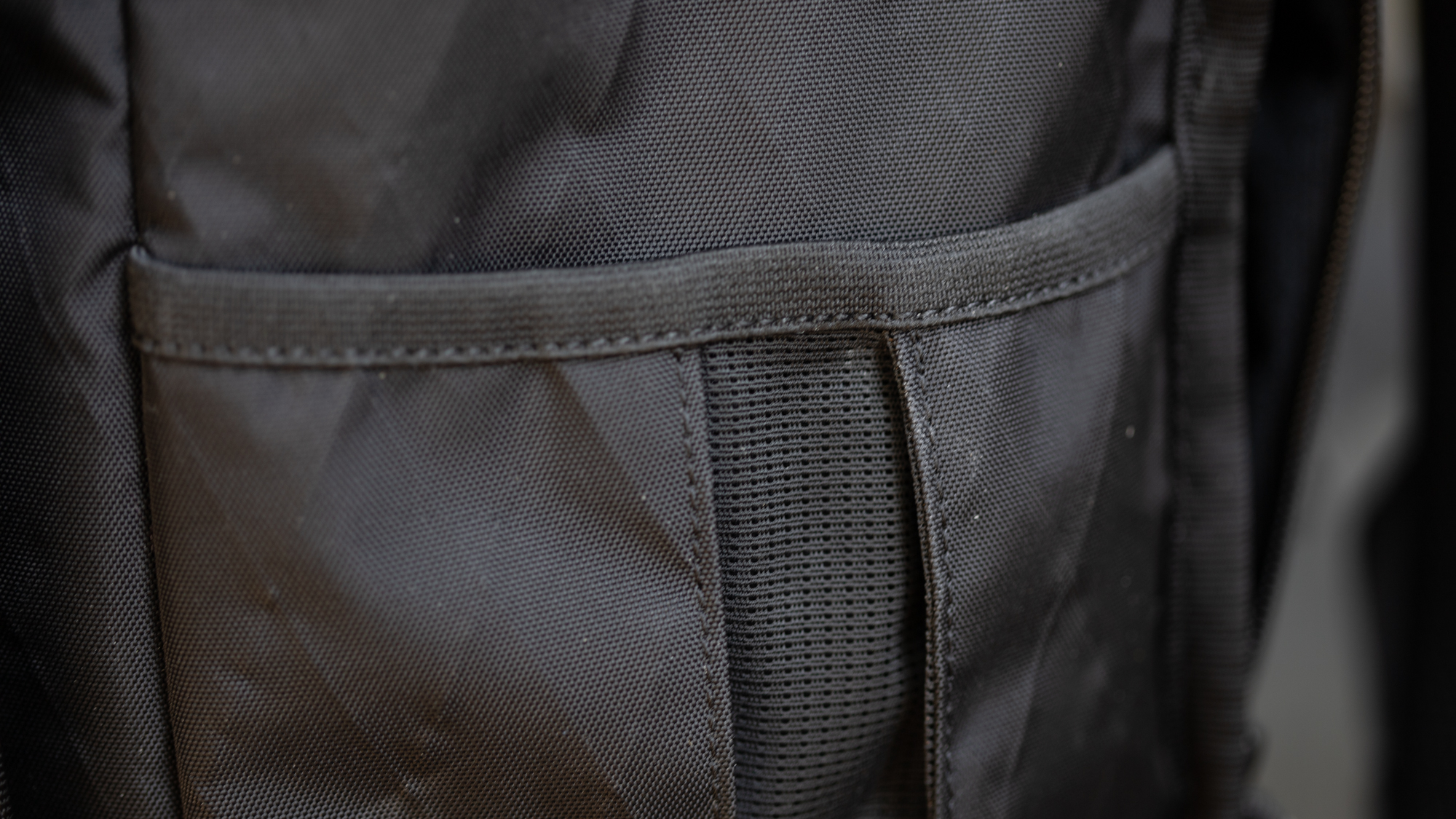
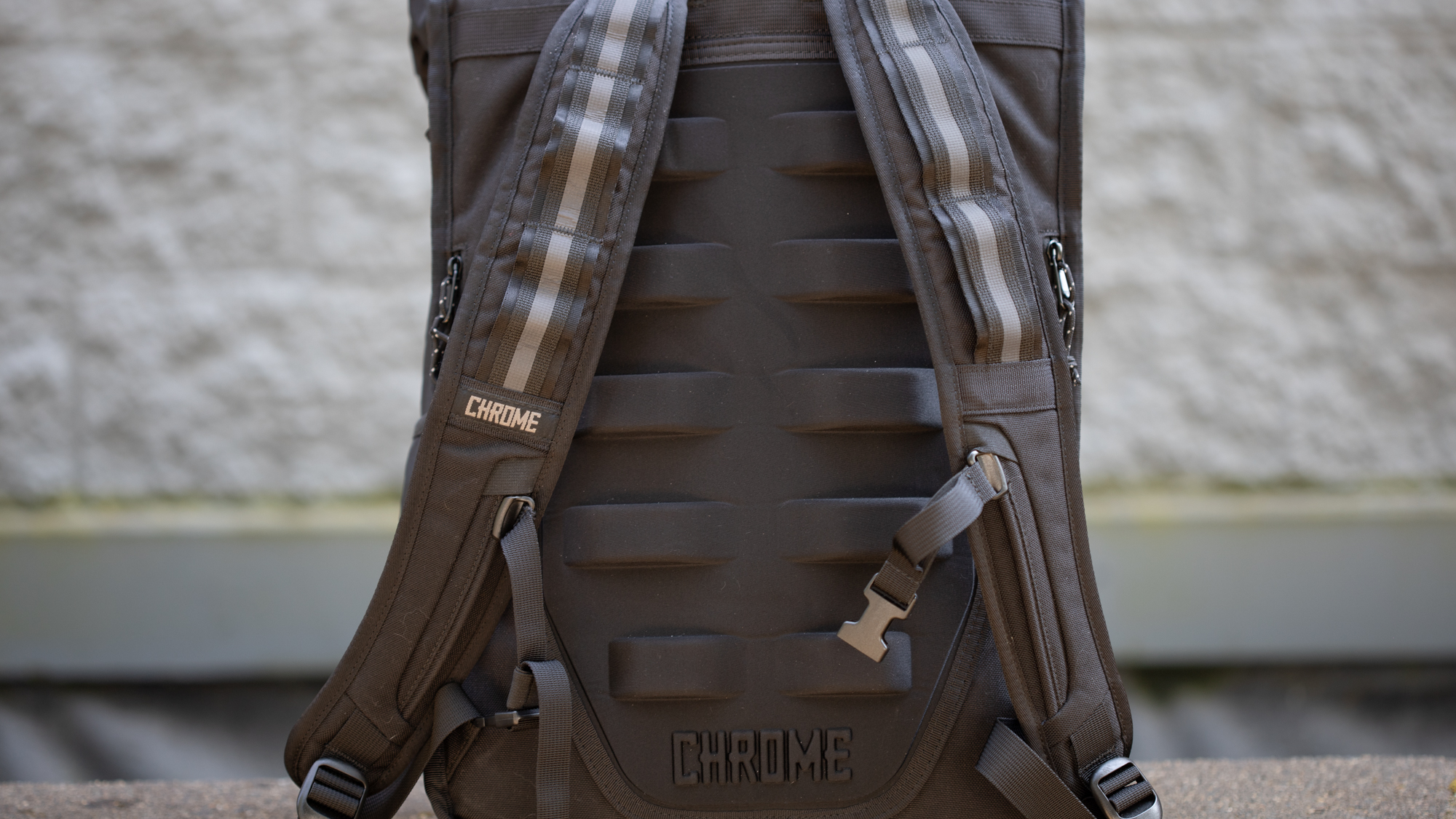
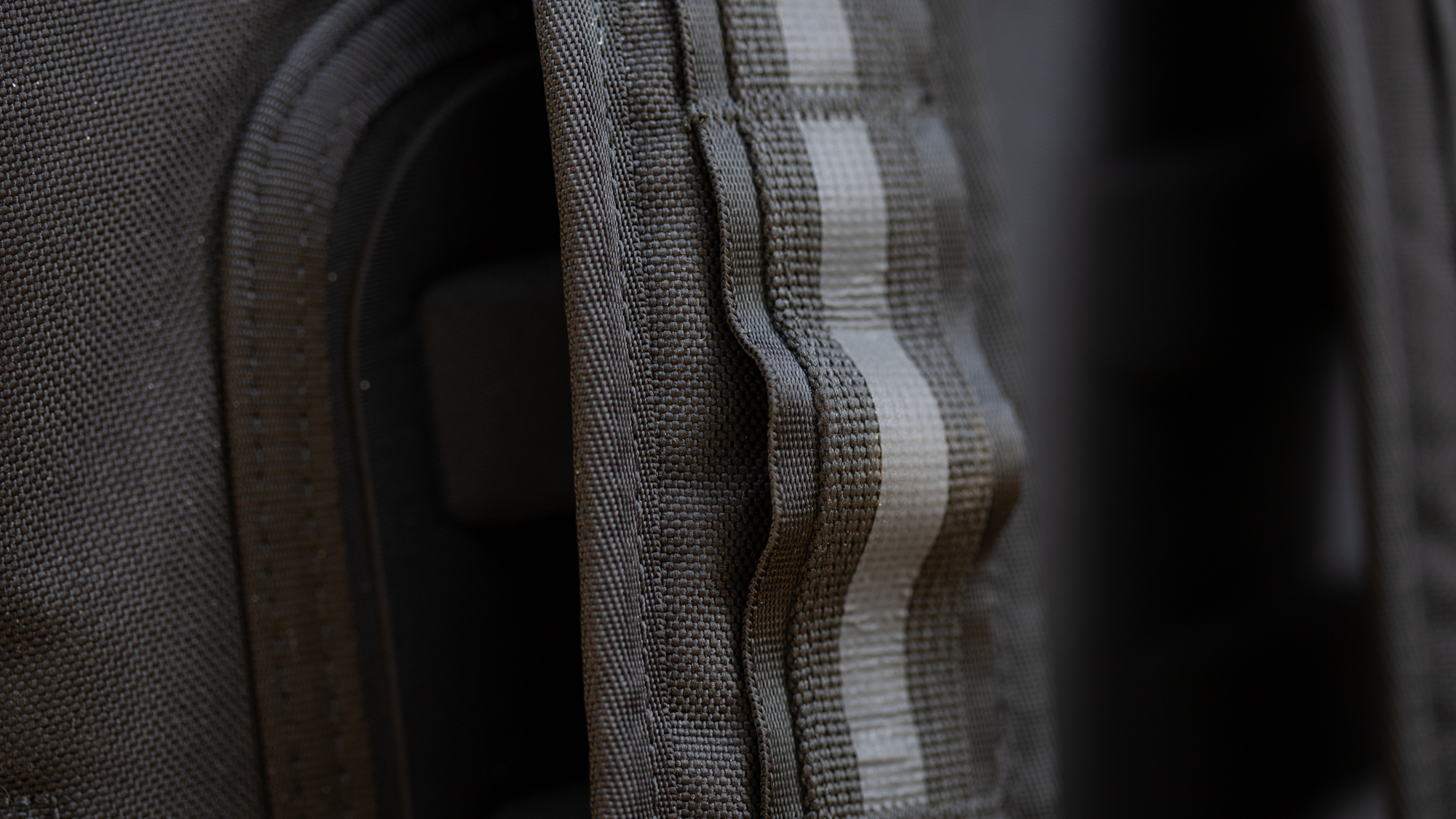
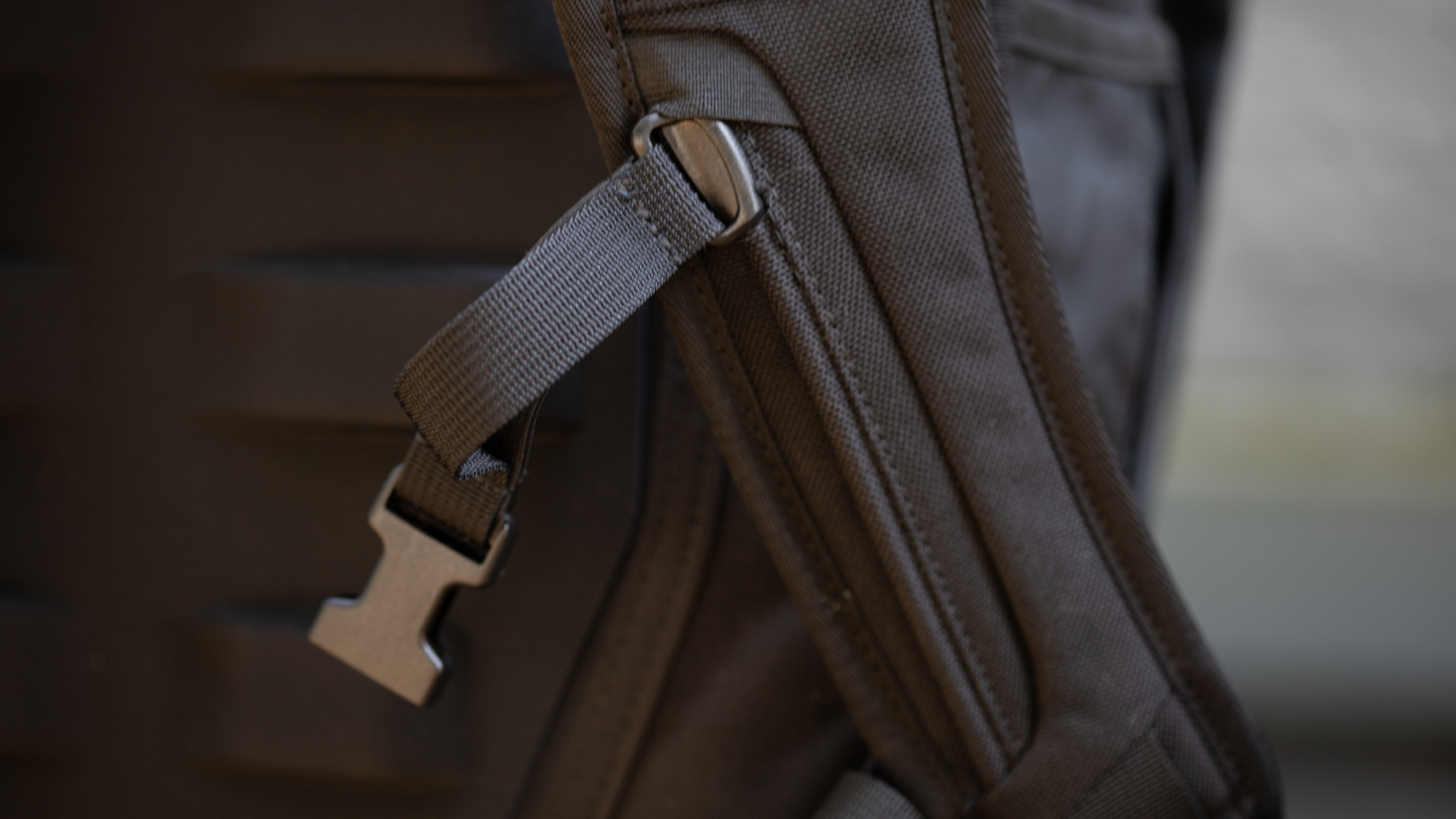
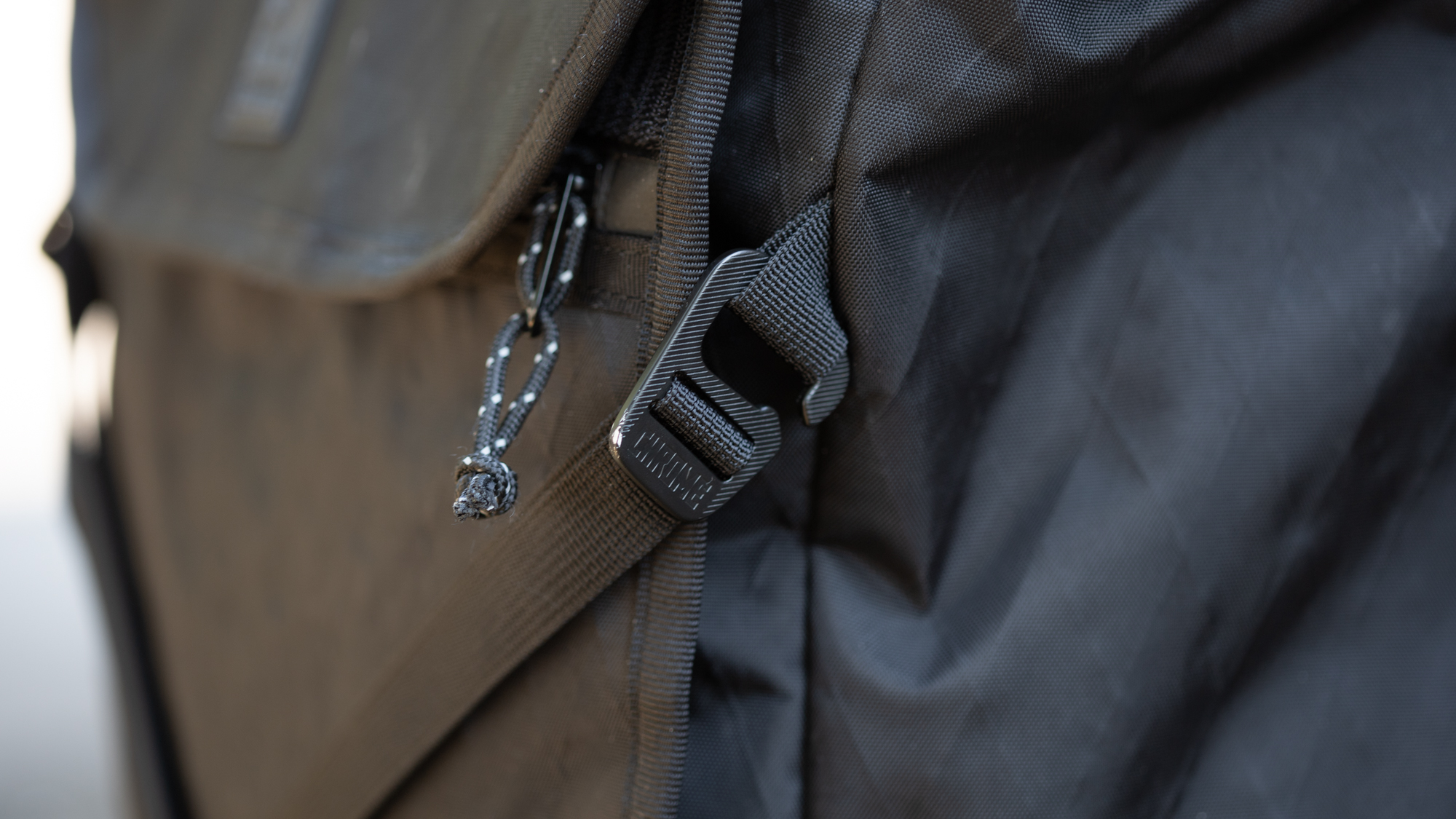
The only time I do sometimes have objects on top of the laptop is when I have a helmet in the cross strap system. There's no bottom to that system so it's not a great option for a jacket but it does work well for holding a helmet. Compared to the Chrome Barrage, this update basically moves the storage from outside of the bag to the inside. If you've got no laptop, or helmet, it's also a way to cinch down the outer pocket when it's stuffed to the brim.
Another option if you decide you need more external space is to pull the tote bag out. It's not useful on a bike, except as easily cleaned interior space, but it is a joy to have the option to use it when travelling. It's not something I used often but once or twice it's been useful to double up on bags without actually needing to carry a second bag with me.
Despite all the benefits of the Bravo 3.0, there are a couple of things I'd love to see improved. It's silly but more than anything else, I want to see the seatbelt buckle come back to the design. It's an iconic piece of the Chrome Industries heritage and I don't understand how the talented designers at Chrome let a bag get out of the door without it. The brand has also changed the way the roll top closes and it's not a good update. Where there was once a huge buckle and wide strap there's now a small clip that attaches with a narrow strap just at the base of the roll top. It takes effort to get it right.
The last detail is that there's no adjustable strap connecting the top of the shoulder straps to the rest of the bag. This is not a common feature on laptop specific backpacks but the Bravo is huge and it is a common feature on larger volume backpacks that helps keep the load tight against the body. The Barrage doesn't have it either but that bag has a different design to the upper part of the straps. I don't carry a lot of weight on the bike so in that situation it hasn't been an issue for me but I do miss it when walking through an airport with a full bag.
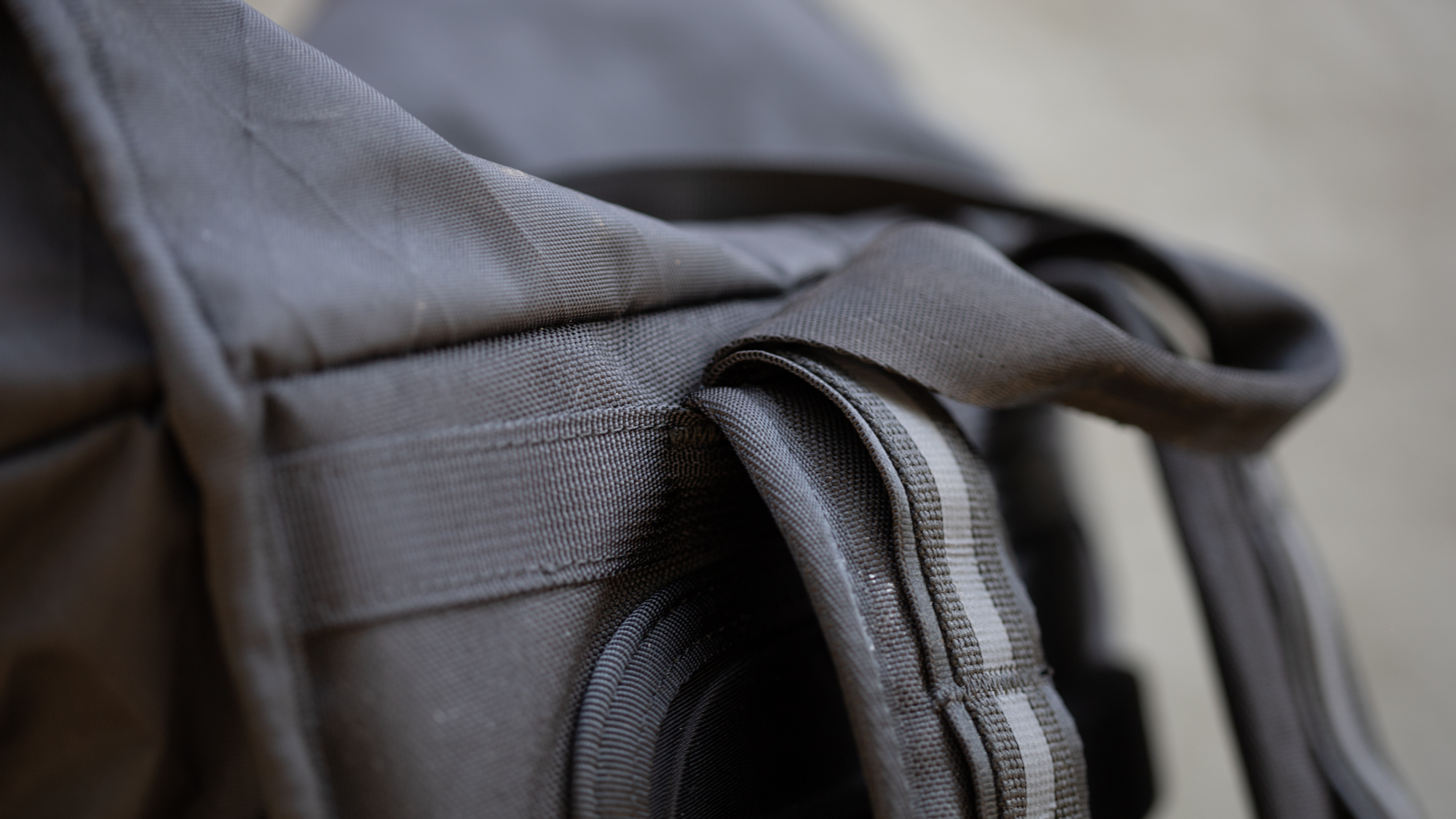
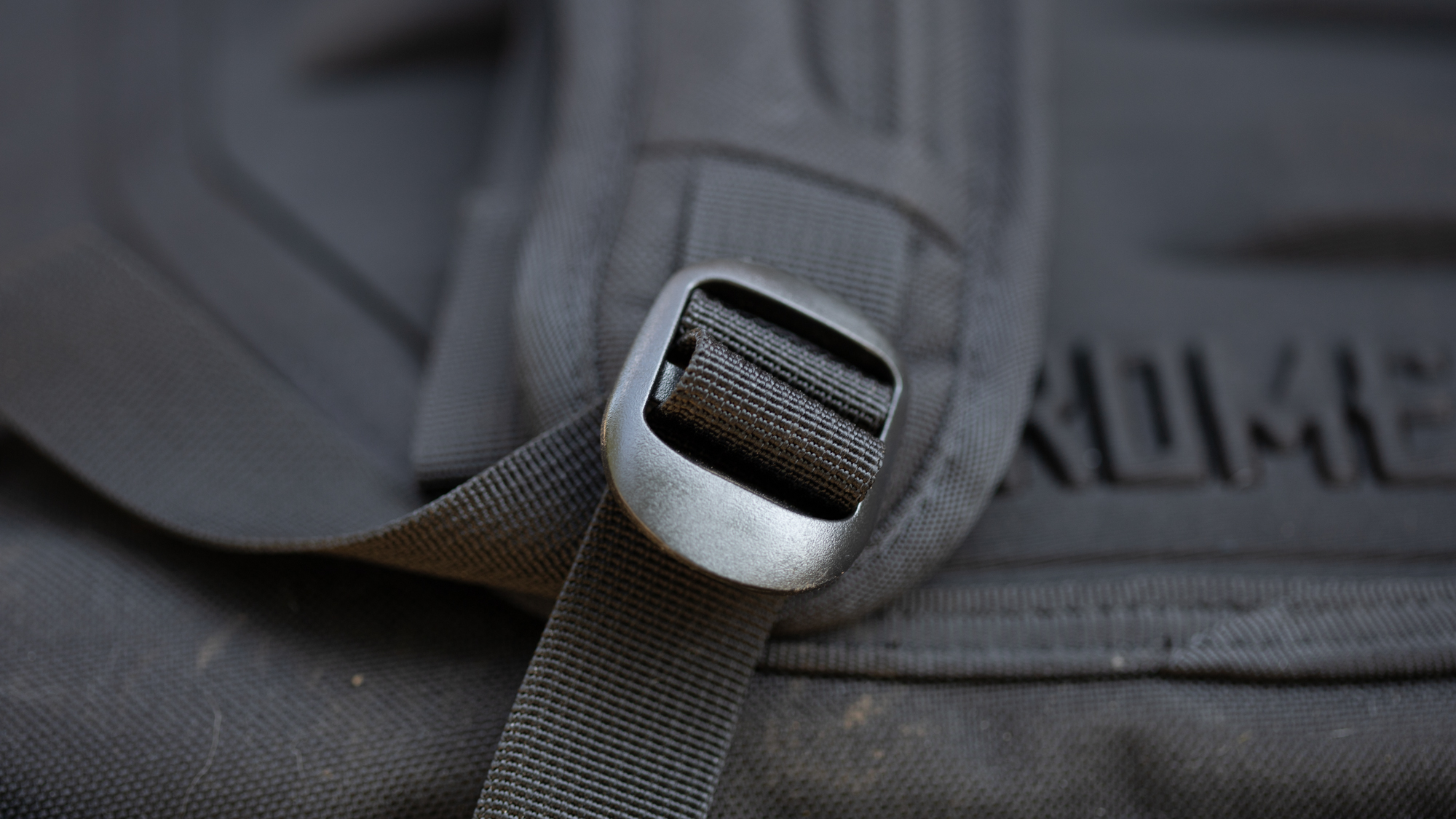
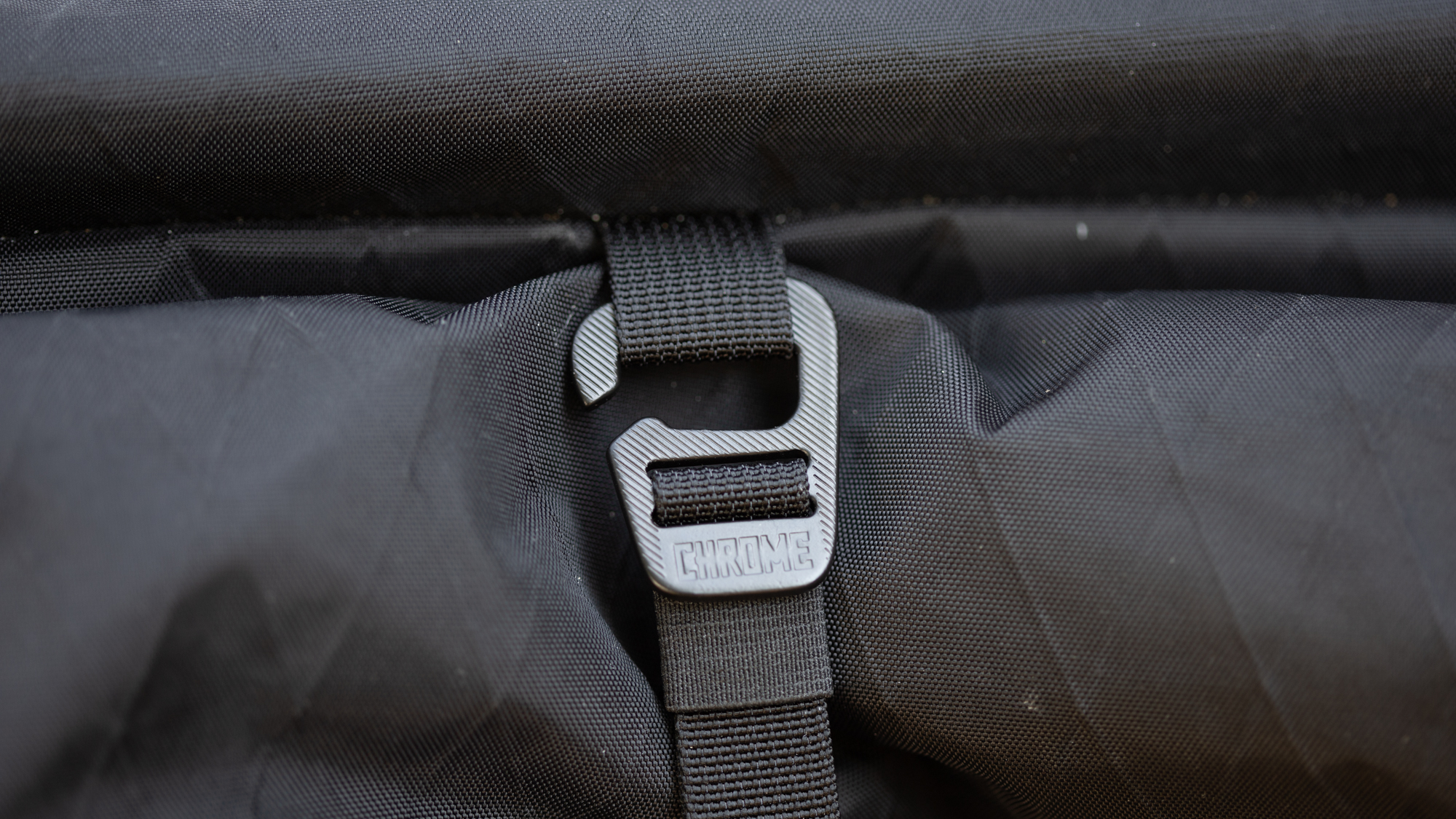
Verdict
It's been 17 years since the first time I saw a Chrome Industries bag but it left an impression on me. I was riding the train through downtown Los Angeles and I saw a messenger bag I'd never seen before. It had a seatbelt buckle on the strap and I remember it looking like the coolest bag I'd ever seen. Over the years since then I've had a number of Chrome bags and each time, I've switched it was only because I had a new need. They're not the cheapest options, but the bags last forever and as I write this, I have a Barrage Cargo Backpack sitting next to me that’s eight years old and looking brand new.
I haven’t had time to use the Bravo 3.0 for eight years yet but I see no reason to believe it’s going to be any different, so consider this an investment. The quality of the construction is as good as it gets and it’s backed up with a lifetime warranty. The Bravo also outranks not only the Barrage but most competitors with room for a 15in laptop (even bulkier non-Apple-branded laptops), and 35 litres of internal volume. It’s a big bag that you can ride with comfortably. If you find yourself heading to the airport and would rather not lose your checked luggage there’s room, and features, that make the Bravo a good choice for that use as well.
When it comes to my complaints about it, they all more or less revolve around features that the Barrage has and the Bravo 3.0 lost. The iconic buckle is missing, the design lacks in the way the upper part of the shoulder straps connect to the rest of the bag, and the roll top is more difficult to close. Despite the loss of those features, there’s not a competitor that does it better and there’s no competition for something this big. If you find the typical volume of close-to-twenty-litres limiting, then the Chrome Industries Bravo 3.0 is the best choice out there.
| Build Quality | As good as it gets. Choose your bag well because it’s going to last a lifetime. | 10/10 |
| Storage Space | 35 litres is next to impossible to find in a cycling specific bag. Adding the bag-within-a-bag and room for a 15” laptop only makes it more usable | 10/10 |
| Comfort | It’s comfortable on a bike but when you load it down the lack of adjustment at the top of the straps is a problem. | 7/10 |
| Style | Chrome Industries was one of the brands that created the counter culture identity of messenger bags and cycling backpacks. The Bravo 3.0 is still a stylish bag but it’s lost some of its identity. | 8/10 |
| Value | More expensive than some but less than many and it will last a lifetime. That’s the definition of value. | 10/10 |
| Overall | Row 5 - Cell 1 | 90% |
Tech Specs: Chrome Industries Bravo 3.0 Blckchrm
- Price: £189 / $200 / €235 / $385 AUD
- Dimensions: 19.5" rolled - 25.5" unrolled H | 13.25" W | 6.75" D
- Volume: 35L
- Weight: 2.6 lbs | 1.2 kg
- Bag Material: 22x nylon shell with TPX durable laminate technology
- Max Laptop Size: 15”
- Laptop Compartment: Top Opening with 1” headspace, Padded, 15" H / 11 1/4" L, no gusseting
Josh hails from the Pacific Northwest of the United States but would prefer riding through the desert than the rain. He will happily talk for hours about the minutiae of cycling tech but also has an understanding that most people just want things to work. He is a road cyclist at heart and doesn't care much if those roads are paved, dirt, or digital. Although he rarely races, if you ask him to ride from sunrise to sunset the answer will be yes. Height: 5'9" Weight: 140 lb. Rides: Salsa Warbird, Cannondale CAAD9, Enve Melee, Look 795 Blade RS, Priority Continuum Onyx
